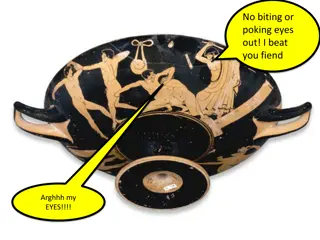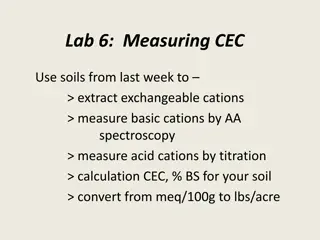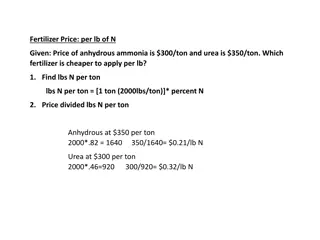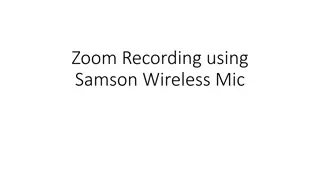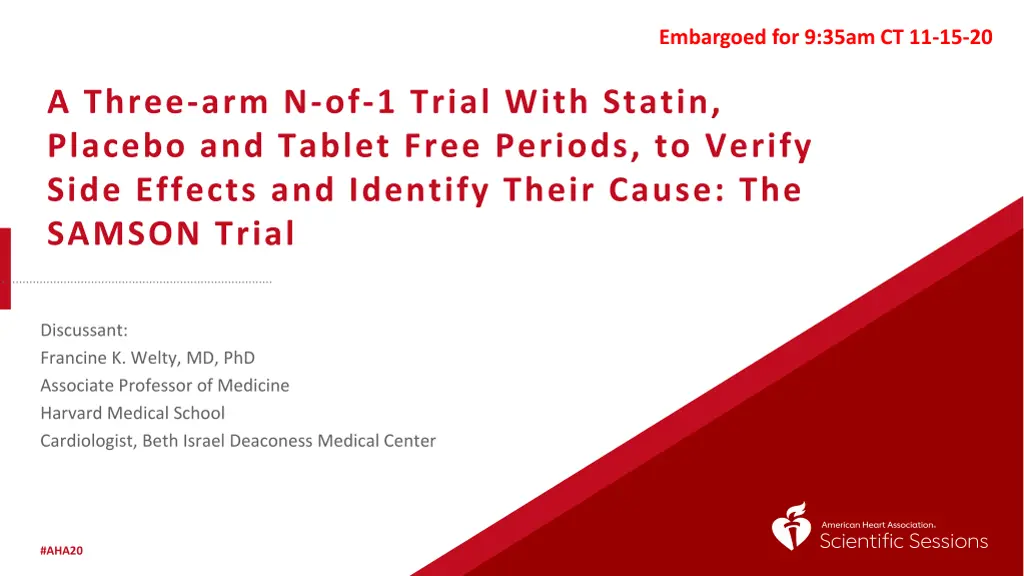
Understanding Statin Side Effects: Insights from SAMSON Trial
Explore the SAMSON Trial findings on statin side effects, where 60 subjects underwent a three-arm N-of-1 trial to verify symptoms, leading to implications for patient management and treatment strategies.
Download Presentation

Please find below an Image/Link to download the presentation.
The content on the website is provided AS IS for your information and personal use only. It may not be sold, licensed, or shared on other websites without obtaining consent from the author. If you encounter any issues during the download, it is possible that the publisher has removed the file from their server.
You are allowed to download the files provided on this website for personal or commercial use, subject to the condition that they are used lawfully. All files are the property of their respective owners.
The content on the website is provided AS IS for your information and personal use only. It may not be sold, licensed, or shared on other websites without obtaining consent from the author.
E N D
Presentation Transcript
Embargoed for 9:35am CT 11-15-20 A Three-arm N-of-1 Trial With Statin, Placebo and Tablet Free Periods, to Verify Side Effects and Identify Their Cause: The SAMSON Trial Discussant: Francine K. Welty, MD, PhD Associate Professor of Medicine Harvard Medical School Cardiologist, Beth Israel Deaconess Medical Center #AHA20
Disclosure Chair, Data Safety Monitoring Committee, Empagliflozin International Clinical Trials, Boehringer Ingelheim #AHA20
Study Design 60 subjects with any adverse event within 2 weeks of starting a previous statin Prior symptoms were: 60%- muscle ache; 15% fatigue or tiredness and 10% cramps 2 weeks required for symptom onset to ensure symptoms would recur during study treatment period of 1 month Randomized in cross-over fashion to: No treatment; placebo or atorvastatin 10 mg daily Each treatment was 1 month in duration; No washout between treatment arms Symptom score rated on scale of 0 - 100 #AHA20
Major Findings 49 completed the 1 year study; 5 of 60 dropped out due to severe symptoms Average symptom score on statin: 16.8; 15.4 on placebo and 8 on no treatment 71 stoppages during trial 31 on placebo months (median days before stopping 18) and 40 on statin (median days before stopping 17) Intolerable symptoms for early stoppage: 23% for statin months and 20% for placebo months Primary endpoint: placebo symptoms (above no treatment arm) divided by statin symptoms (above no treatment arm): Nocebo ratio was 0.90- meaning 90% of symptoms elicited by placebo tablets Secondary Endpoint: 30/60 had restarted statin successfully 6 months after the end of the trial; 25 refused to restart #AHA20
Implications Those developing symptoms within 2 weeks of starting a statin should be reassured that approximately half will be able to successfully restart the statin In practice, many patients develop symptoms later than 2 weeks so these findings cannot be generalized to them. In the SEARCH trial, 10-15% developed myalgias during the 1st month of treatment.* *N Engl J Med 2008;359:789-799 DOI: 10.1056/NEJMoa0801936 #AHA20
Time Course for Onset of Myopathy During Treatment with Simvastatin in Patients with SLCO1B1 rs4149056 Genotype Among patients with documented predisposition for statin-induced toxicity related to SLCO1B1 polymorphisms, only about 10-15% of patients developed symptoms of myopathy during statin treatment within the first month. N Engl J Med 2008;359:789-799 DOI: 10.1056/NEJMoa0801936
Limitations and Questions Limitations No washout between each one month treatment arm If subjects developed symptoms during atorvastatin and then went to placebo, was there carryover of symptoms into the placebo arm? Findings limited to those subjects who develop symptoms within 2 weeks of starting a statin did this bias toward the nocebo effect? Non-drug related side-effects of medications are often greatest during the initial weeks of treatment and tend to abate over time Questions Would a longer duration of 1 month treatment demonstrate a greater difference between placebo and statin with improved placebo tolerance? 70 stoppages during the trial what are reasons? Why did 25 of 60 not restart a statin? #AHA20
Managing Statin Associated Muscle Symptoms (SAMS) Although SAMS are common and are most often not statin-induced, statin-induced muscle symptoms are real and should not be ignored. If 40 million are taking a statin in US and 10% have SAMS, then 4 million may be affected and the number with ANY statin-associated side-effect (i.e, weakness, fatigue) would be higher. Statin stoppage increases risk of MI, stroke and total mortality in those who stop statins; therefore, management is important.* When vitamin D level < 30; when supplemented and > 30, more likely to tolerate statin.** Those with SAMS years after starting statin, check for autoimmune myopathy since steroids may be required. *Zhang et al. Continued Statin Prescriptions after Adverse Reactions and Patient Outcomes: A Cohort Study. Ann Intern Med. 2017;167(4):221-227 **Saxon DR, Eckel RH. Statin Intolerance: A Literature Review and Management Strategies. Prog Cardiovasc Dis. 2016 Sep-Oct;59(2):153-164. doi: 10.1016/j.pcad.2016.07.009. 2016 Aug 3. #AHA20
Managing Statin Associated Muscle Symptoms (SAMS) Try alternate dosing 2-3 times a week (Mon,Wed, Fri) total mortality at 7 years was 2% and similar to daily dosing as compared to 7% in those who discontinued statins (p=0.08).* Statins with long half-life LDL-C reduction with alternate dosing similar to daily dosing.* Pitavastatin often well tolerated in those intolerant of other statins, possibly related to lower metabolism through CYP450-dependent catabolic pathways. In those who awaken at night with cramps, try AM dosing cramps may occur during day and be less likely to affect lifestyle. * Hazen SL et al. Treatment strategies in patients with statin intolerance: The Cleveland Clinic Experience. Am Heart J 2013;166:597- 603 #AHA20




